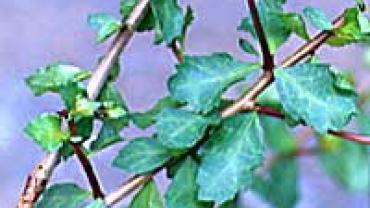
"
Acne vulgaris (common acne) is a chronic inflammatory disease involving the oil glands and hair follicles of the skin. It is characterized by blackheads whiteheads pimples and in severe cases cysts. According to the American Academy of Dermatology it is the most common skin disorder in the U.S. While acne can affect anyone at any age it usually begins at puberty and worsens during adolescence. Eighty-five percent of people will experience acne at some time in their life with 40 percent of adolescents requiring treatment by a dermatologist. Teen boys tend to have longer lasting and more severe acne than do girls. But acne is not limited to teens as it can affect people of all ages from infants to adults.
In each pore or hair follicle sebaceous glands produce sebum a waxy oily substance that your body needs to help keep skin moist protected and the skin barrier uncompromised. Acne occurs when sebum and dead skin cells become trapped in the hair follicle creating a blockage within the pore. This obstruction of dead cells and oil is called a comedo. Blackheads and whiteheads are examples of non-inflamed comedones.
Etiology
We have come to realize that hormones can play a significant role in the etiology of acne. At puberty levels of androgens or male hormones (which women also produce albeit in much smaller amounts) increase causing the sebaceous glands to produce excess sebum. This excess sebum combined with dead skin cells and/or bacteria creates the perfect set-up for acne breakouts.
In addition to puberty women may see considerable hormonal fluctuations during menstruation pregnancy menopause and perimenopause. During these normal hormonal phase variations acne is most likely to develop or flare up. The role hormones play in adult onset acne however is up for debate.
Propionibacterium acnes is the bacterium that is most commonly associated with the development of the condition as it has been shown to increase inflammation and inappropriate sebum production.
Some research has indicated that dietary choices will have a direct impact on acne formation. For instance a hyperglycemic diet or increased intake of omega-6 fatty acids both have been shown to be inflammatory in nature when in excess and may have potentiating effects on serum insulin and insulin-like growth factor-I (IGF-I) levels thereby promoting the development of acne.
Indeed low glycemic diets have been shown to improve acne cases in young males.
Alternative support
One therapeutic low cost method that positively impacted acne was sunlight exposure which in addition to acne improved cases of atopic dermatitis and seborrheic dermatitis.
Guggul is a plant resin that has been used in Ayurvedic medicine for thousands of years and is most commonly used with high cholesterol. But in an interesting study the use of guggul was compared to the antibiotic tetracycline and was shown to perform just as good as the medication. However in those individuals with excessively oily skin the plant resin worked even better.
Another botanically sourced compound is a natural phenol called bakuchiol which is isolated from the seeds of Psoralea corylifolia a tree native to China known for its uses in traditional Chinese medicine. Bakuchiol has a natural ability to fight inflammation by controlling leukocytic migration through the modulation of PGE2 at the site of the inflammation.
Zinc and vitamin A are two micronutrients that have been used both topically and orally to reduce the severity and frequency of acne outbreaks. Nutritional deficiencies in vitamins A and E have been associated in those experiencing severe acne compared to those who do not so supplementation in this group should be considered as well.
Finally a fascinating study discusses the link between the gut brain skin axis in which depression and anxiety can negatively impact normal intestinal floral growth and balance subsequently leading to gastrointestinal compromise and leaky gut which will eventually increase systemic inflammation. The researchers emphasized this by saying stress-induced alterations to microbial flora could increase the likelihood of intestinal permeability which in turn sets the stage for systemic and local skin inflammation and that as many as 40% of those with acne have hypochlorhydria.
For those individuals suffering the emotional and cutaneous scarring that for many is the legacy of severe acne the above reemphasizes the need to view acne and its treatment like many other health conditions in as comprehensive a manner as possible.
by Michael Fuhrman D.C.